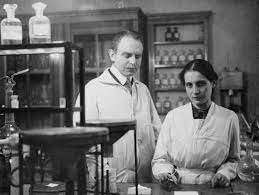Educational Equilibrium: Proposal for Reform
Written By: Maria Lemets
Despite Franklin’s ground-breaking discovery of the double-helix structure, or Hamilton’s revolutionary code for the first moon landing; the education system continues the legacy of their accomplishments under Jim Watson, Francis Crick, and Neil Armstrong instead. Consequently, the amassed discretisation of women’s accomplishments may account for the immense negative stigma surrounding female scientists. For example, when asked to draw a “scientist”, girls drew female scientists 2.8 times less at age 16 compared to age 6 (NeoCenter).
The lack of appropriate education on the origin of foundational scientific knowledge implants the negative stigma surrounding careers in the fields of science, technology, engineering, and mathematics (STEM). For example, multinational students all over the world strive to pursue careers involving chemistry, many of whom learn of nuclear fission in their career. The introduction of nuclear fission is largely associated with Nobel Prize winning Otto Hahn. However, his research partner Lise Meitner, who was a Jewish woman, was never recognised eligible for the award by the Nobel Prize committee (Timothy J. Jorgensen). Some may argue that the Enrico Fermi Award compensates for the lack of recognition on Meitner's behalf (Timothy J. Jorgensen). However, such mistakes do not compensate for the permanent lack of recognition of Meitner's efforts: with Hahn’s name being mentioned in 225,000 Google searches compared to Meitner’s 83,100 Google searches regarding nuclear fission. Putting into mathematical perspective, Lise Meitner is named roughly 36.9% less than her research partner on the topic of nuclear fission.
Lise Meitner and Otto Hahn working together in a lab
Despite an increase of women pursuing STEM fields in recent years, a lack of equilibrium persists: with the example of only 20% of the computer scientist professions being women (ComputerScience). With that knowledge, that raises the question of: “How do we change that statistic?”.
A reform to the educational system would consist of implementations where women are recognised for their equal capabilities in the STEM fields. There are possible solutions that can strive towards greater equality and understanding amongst men and women. For example, an accurate learning of the origins behind various concepts that shape the world as it is today are necessary for creating the equilibrium amongst both men and women. Expanding on this, an important aspect to this would be ensuring that students are getting accurate information about their subjects of interest. However, the lack of accreditation occurs beyond the cases of Lise Meitner. A prime example of a lack of recognition, is the case of Henrietta Lacks, whose cancer cells have been used in stem-cell research non-consensually for their constant reproduction.
The work of these women has been concealed by their male colleagues and overshadowed in history
As such, it is important that students of any gender are exposed to historical and ongoing contributions made by women to STEM. To keep students up to date with scientific research, a possible solution to raising awareness would be to start up a weekly shout-out system to female STEM researchers, available to view to all students. This would include historical or modern researchers, and ideally provide the exposure to normalize the idea of women in STEM. What can take from this to make a change towards empowering women in your community?
Sources
“Hedy Lamarr | Biography, Movies, & Facts.” Britannica, 15 January 2024, https://www.britannica.com/biography/Hedy-Lamarr. Accessed 28 January 2024.
“In 'draw-a-scientist' studies, more kids draw women than before.” Neogen, 15 June 2018, https://www.neogen.com/en-gb/neocenter/blog/in-draw-a-scientist-studies-more-kids-draw-women-than-before/. Accessed 28 January 2024.
Jorgensen, Timothy J. “Lise Meitner – the forgotten woman of nuclear physics who deserved a Nobel Prize.” The Conversation, 7 February 2019, https://theconversation.com/lise-meitner-the-forgotten-woman-of-nuclear-physics-who-deserved-a-nobel-prize-106220. Accessed 28 January 2024.
“Marthe Gautier: the women who discovered the origin of trisomy 21.” SCIGI - Sciences for Girls, 25 May 2022, https://scigi1.home.blog/2022/05/25/marthe-gautier-the-women-who-discovered-the-origin-of-trisomy-21/. Accessed 28 January 2024.
“Rosalind Franklin | Biography, Facts, & DNA.” Britannica, 5 January 2024, https://www.britannica.com/biography/Rosalind-Franklin. Accessed 28 January 2024.
Writers, Staff. “Women in Computer Science & Programming.” ComputerScience.org, https://www.computerscience.org/resources/women-in-computer-science/. Accessed 28 January 2024.

